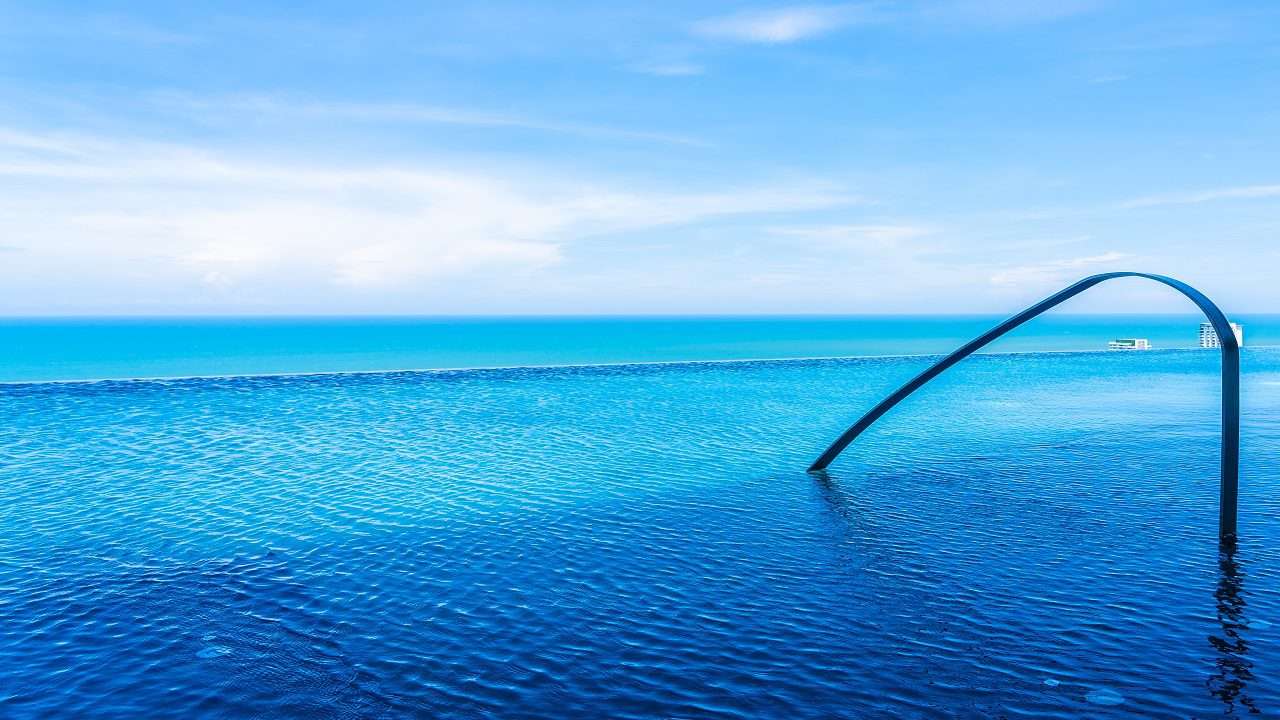Pools are available in various sizes and types, and the kind you select will influence the cost, construction phase, and how you and your household will utilize it. As such, before investing in a pool, exploring your choices for an in-ground pool, above-ground pool, or specialized pool is critical.
So, read about a few of the common types of pools by using the following information. Each choice has its advantages and disadvantages, as well as unique concerns that should be factored into your selection.
Types Of Pools

12 Best Pools For Your Future Home
1. Above-Ground Swimming Pool – Best For An Affordable Investment

Above-ground pools are the most cost-effective pool types because they sit on the ground of your yard, perhaps surrounded by a deck or patio. Most above-ground pools are built with aluminum, resin, or steel cladding with vinyl liners. And there are patterned walls available.
This pool may frequently be assembled and dismantled as a do-it-yourself effort, though several manufacturers provide installation and delivery services. It comes in sections that can be readily transported to the assembly location. An above-ground pool is also appropriate for yards with restricted access.
Advantages Of Above-Ground Swimming Pool
- Above-ground pools are the least expensive sort of pool
- Above-ground pools can be transferred if you shift your house
- They are appropriate for small yards and come in various forms and sizes
- An above-ground pool is simple to assemble and disassemble
Disadvantages Of Above-Ground Swimming Pool
- Above-ground pools can be tough to hide in a landscape, but thoughtfully built patios and walkways can help them blend in
- They do not last as long as in-ground pools
2. In-Ground Swimming Pools – Best For Multi-Purpose Recreational Use

In-ground pools are everlasting constructions designed and built straight into the earth. They are further categorized based on the material of construction – the most common of which are fiberglass pools, concrete pools, and vinyl liner pools. Typically, these materials are chosen for their strength and flexibility. Your swimming pool contractor may advise you on the best type of pool to use.
A. Fiberglass Swimming Pools
A fiberglass pool is often more adaptable than a concrete pool, making it an ideal choice in seismically active places. Fiberglass panel pools, which are built on-site, are another choice that provides more design freedom. These are typically manufactured by the supplier and delivered in a single piece.
B. Concrete Pools
A concrete pool is often the most expensive to construct since it is built on-site, enabling you to design it in practically any form or size. You can use plaster, paint, and specialist finishing substances, such as Pebble Tec, which are available in various hues to give the concrete pool a bit of color.
C. Vinyl Liner Pools
A vinyl liner pool is an in-ground pool constructed with fastened-together panel walls on a concrete foundation. The pool is then lined with a custom-made vinyl liner.
Advantages Of In-Ground Swimming Pools
- There are three distinct material possibilities
- Configurable
- Sturdy
- Increase the resale value of the property
Disadvantages Of In-Ground Swimming Pools
- Costly
- Regular maintenance is required
Tip
The cost of constructing a pool might vary substantially depending on your area’s price and labor availability. Costs for installing a concrete pool, for example, can be significantly lower in a big metropolitan center in the Southwest, where there are numerous builders knowledgeable with concrete pool construction than in a rural location of the Midwest. The best approach to acquire a fair pricing estimate is to have detailed talks with many contractors in your region.
3. Infinity Swimming Pools – Best For Enjoying The Surrounding Landscape
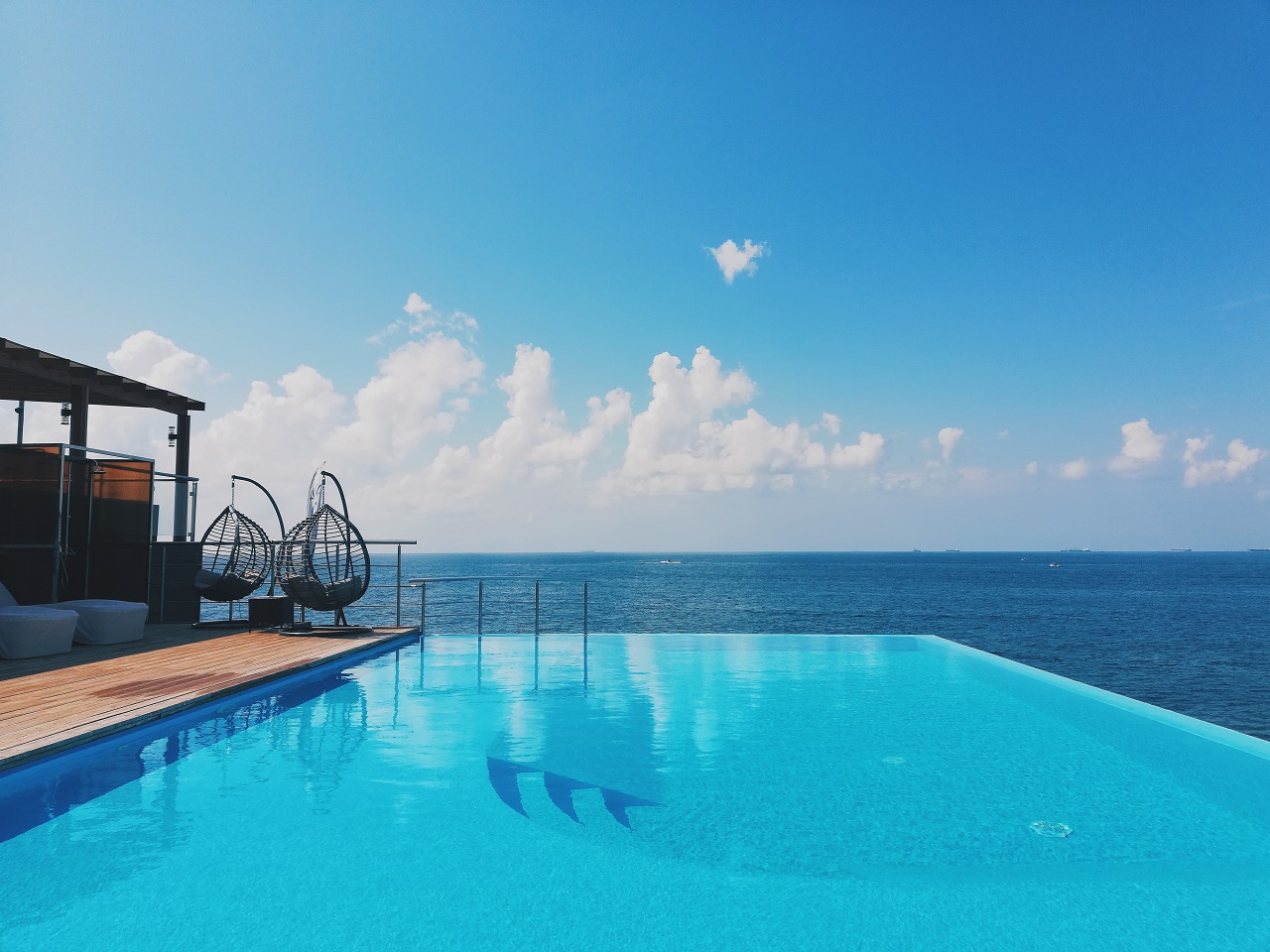
Infinity pools are designed to accentuate a beautiful vista, as seen on influencers’ Instagram profiles while visiting a luxury resort. They are also called vanishing edge pools, zero edge pools, negative edge pools, or infinity edge pools.
Infinity pools are often designed and installed as a component of a grand plan during the construction of a property. This pool is frequently utilized in locations with a sharp drop and offers views of hills, rivers, the ocean, and other stunning settings. That said, infinity pools may be highly expensive to construct and maintain because of their particular design requirements.
Advantages Of Infinity Swimming Pools
- They are suitable for installation on uneven terrain
- An infinity pool is Instagram-worthy and eye-catching
- They are good for the environment
Disadvantages Of Infinity Swimming Pools
- The most significant disadvantage is undoubtedly the cost
- The infinity pool will be less striking if your yard does not have a gorgeous landscape
- Because of their exposed edge or edges, infinity pools pose safety risks compared to conventional swimming pools
4. Lap Swimming Pools – Best For Health Enthusiasts With Limited Space
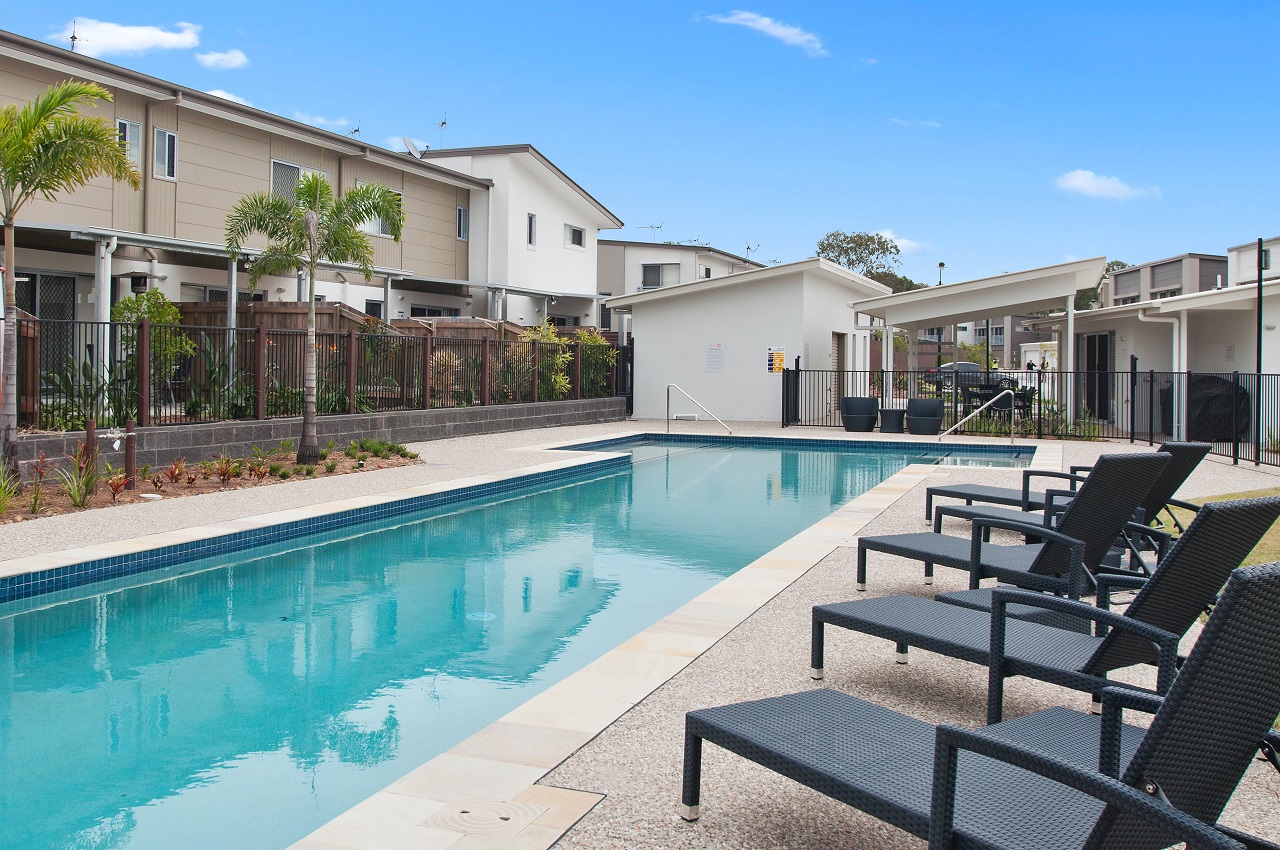
A lap pool is a pool designed and utilized for exercise and wellness. These aren’t pools for ledges and water activities but for getting a daily workout by swimming laps. This form of an inground pool is generally long, thin, and rectangular.
Lap pools are perfect for tiny yards since they take up less space. Most lap pools include at least 40 feet of the straight, uninterrupted swimming area to reduce the need for frequent turns. They can also be as narrow as 8 feet for a single swimmer.
Advantages Of Lap Swimming Pools
- Excellent for physical activity
- When yearly expenditures are considered, they may be less expensive
Disadvantages Of Lap Swimming Pools
- Not a good choice for families
- Outside of completing laps, it’s not particularly functional
5. Architectural Swimming Pools – Best For Making A Design Statement

An architectural swimming pool must have structure and clear lines for a unified aesthetic, typically mirroring the home’s shape and employing the same materials. An architect generally creates a geometric, elegant architectural pool.
As a result, the pool contributes to home improvement, employing numerous of the same elements and decorative aspects, which may increase the value of the property itself. If the home is custom-made, the pool is typically built concurrently, taking into account the area of the property as well as the style and connection of the home to the pool.
These are pools for even more wealthy owners who will engage architects to create their homes. Costs are normally factored into an entire master design for the property and landscaping, but such pools may easily add thousands of dollars to the price of a property. That said, the pool and water upkeep quality are similar to any in-ground pool.
Advantages Of Architectural Swimming Pools
- Extremely appealing to the eye
- Increases the home’s resale value
Disadvantages Of Architectural Swimming Pools
- Extremely costly
- Protracted planning and implementation procedure
6. Indoor Pool – Best For Families With Plenty Of Space And Generous Budget
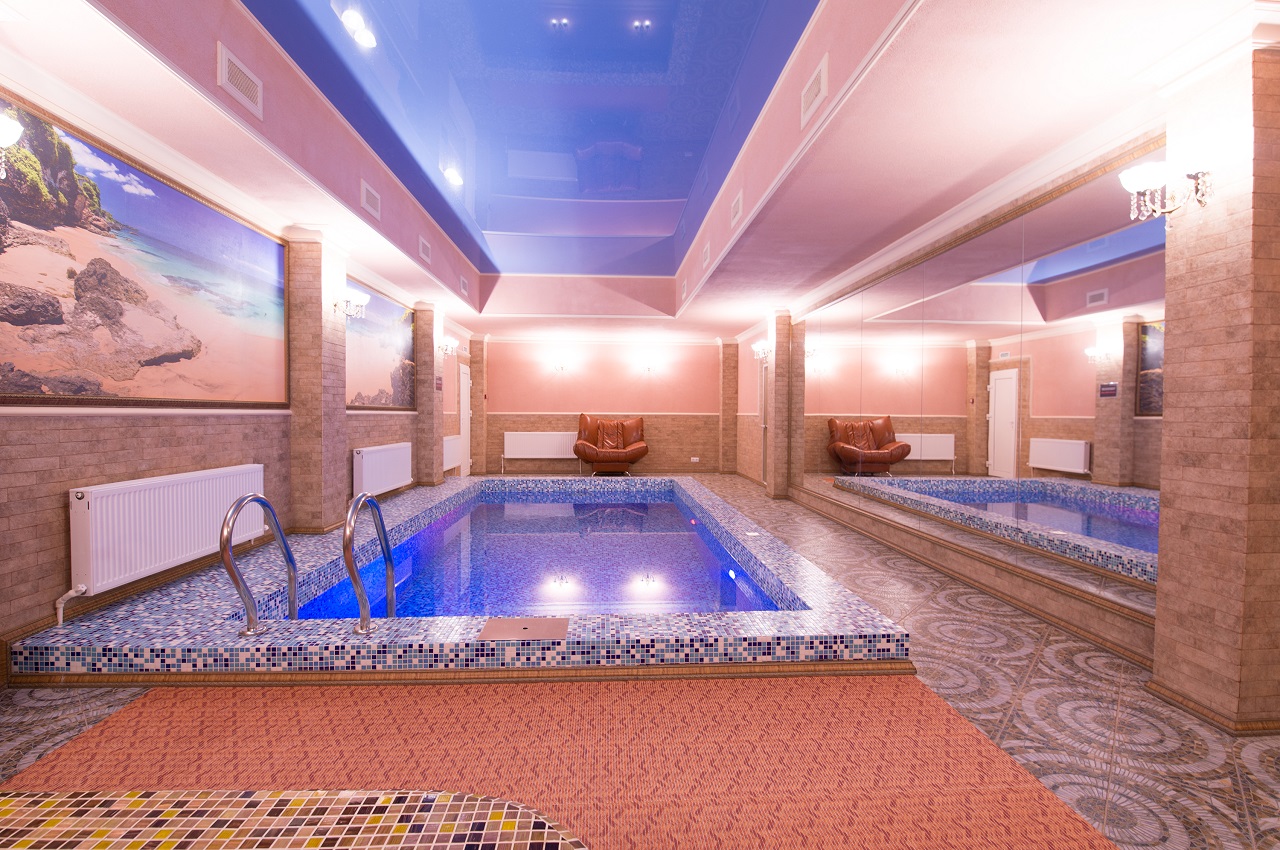
An indoor swimming pool is simple: it’s indoors, under a roof, and generally insulated by at most one house wall. Indoor pools are often basic, geometric designs designed for exercising or training all year, particularly in chilly areas.
In most situations, indoor swimming pools are a normal in-ground pool with a built-in glass shell that costs extra. However, an above-ground pool can also be enclosed in the same manner.
Indoor heated pools are sometimes less expensive to maintain than outdoor pools. The pool room maintains heat better than outdoor pools since it is insulated from the outdoors. Furthermore, the fence keeps twigs and other waste away from the pool, reducing cleaning time.
Advantages Of Indoor Swimming Pool
- Swimming is possible all year
- Indoor pools require far less upkeep
- There is no such thing as solar damage
- Indoor pools use fewer chemicals
- Safety and privacy
Disadvantages Of Indoor Swimming Pool
- Indoor pools generate a significant amount of humidity in the air
- Indoor pools are far more expensive than outdoor pools
- Warming the pool will raise your energy bill
7. Olympic-Size Pool – Best For Health Enthusiasts And Athletes
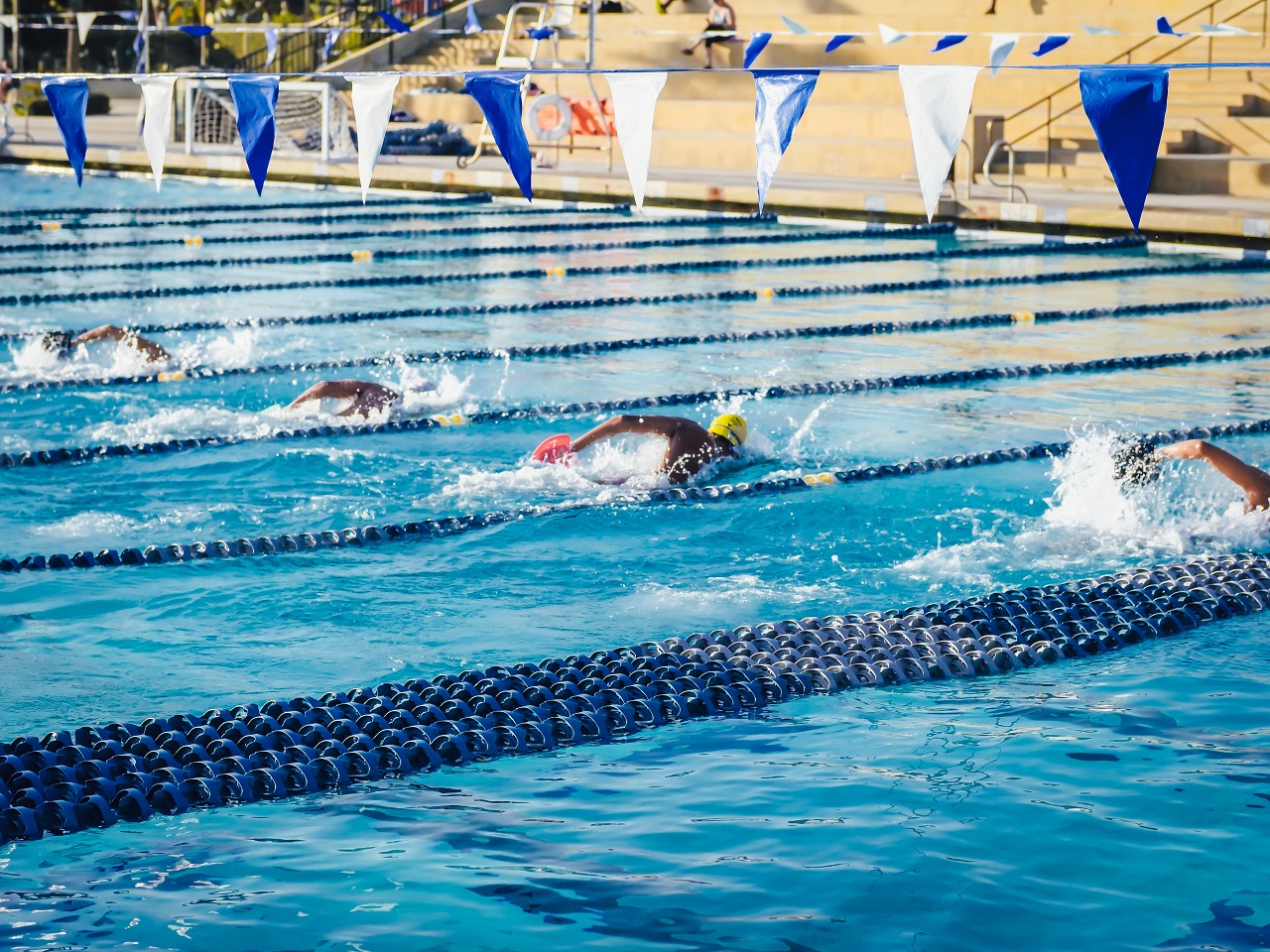
Olympic swimming is among the most popular sports in the world, with the most events and competitors from various nations. It’s no wonder prospective Olympians and swimming enthusiasts get swept up in the big event and desire their Olympic-sized swimming pool.
Installing an Olympic-sized swimming pool, on the other hand, is not for the faint-hearted. An Olympic pool is 25 meters wide and 50 meters long, with a capacity of 500,000 gallons of water. Anyone with such a pool will need to employ a pool maintenance company for simple upkeep.
Advantages Of Olympic-Size Pool
- Perfect for sports enthusiasts and Olympic swimmers
- It gives ample space to swim freely without any hassle
Disadvantages Of Olympic-Size Pool
- Very expensive to build
- Not a good fit for families
- Need a large space for building the pool
8. Natural Swimming Pools

Natural swimming pools (also known as swimming ponds in Europe, where the concept first appeared in the 1980s) are self-cleaning pools that mix swimming sections with water gardens. The majority of natural pools have rubberized or reinforced polyethylene linings.
A distinct “regeneration” zone within the pool is outfitted with aquatic vegetation, which works as an organic cleaning system. Natural pools, like any other in-ground home swimming pool, can be created in a seamless, primitive style with stones and waterfalls, or they can be contemporary or architectural—sleek and attractive.
Most natural pools are often the same or slightly more expensive than standard swimming pools, based on the landscape design. They are popular among gardeners due to the wide range of plant life that can be cultivated in them, as well as green activists and anyone who does not wish to dip in chlorinated water.
When the ecology is correctly balanced, they may be rather simple pools to maintain, although this can be difficult. If the pool water composition gets out of equilibrium or the pool becomes overrun with algae, it won’t be easy to recover without significant effort.
Advantages Of Natural Swimming Pool
- Environmentally-friendly
- Beautiful and one-of-a-kind
- Requires a vast area
Disadvantages Of Natural Swimming Pool
- Expensive
- Long installation time
9. Spool Swimming Pool
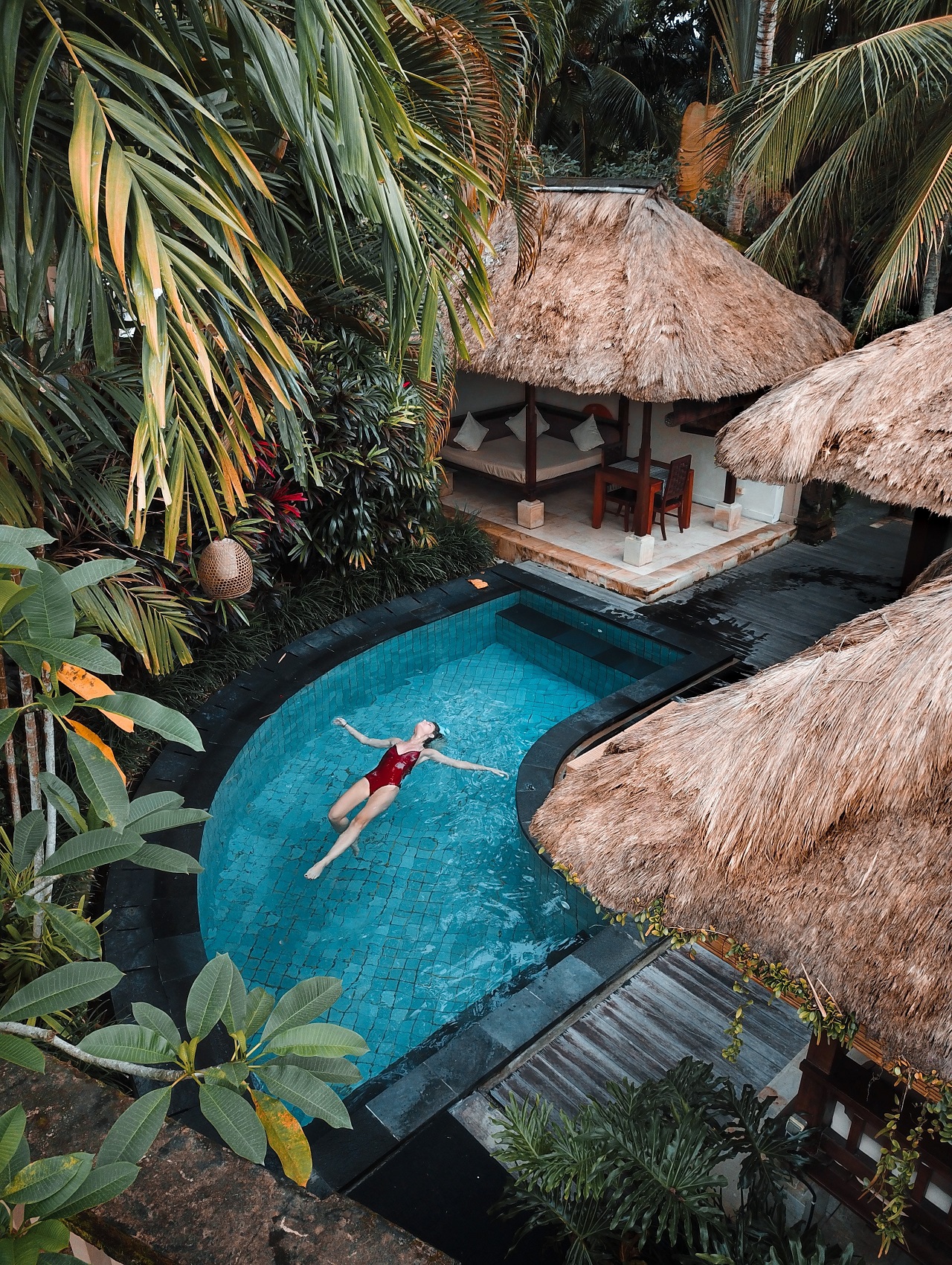
A spool is formed by combining the phrases spa and pool. Pool builders have seen an increase in business from homeowners with tight funds and smaller estates who want water features smaller than a traditional swimming pool but larger than ordinary spas in recent years.
Many homeowners use their spools primarily for leisure and entertainment, providing a place to bathe and chill during summertime or to enjoy beverages with guests on warm evenings. Spools may even feature directed jets that you can swim against.
Some spools are built in the ground with poured concrete, but most are built with a big constructed spa/whirlpool shell encircled by a broad raised deck. Maintenance is often easier than in bigger pools, but you will still be required to monitor the water chemistry and filtration equipment.
Advantages Of Spool Swimming Pool
- Excellent for unwinding
- It is less costly than a full-sized pool
Disadvantages Of Spool Swimming Pool
- Not ideal for vigorous swimming
Tip
Some spools are sufficiently large to meet the standards for full-sized pools. As a result, you may be required to construct a protective fence and fulfill other municipal minimum standards.
10. Saltwater Swimming Pool –Best For People Who Want To Avoid Chemicals
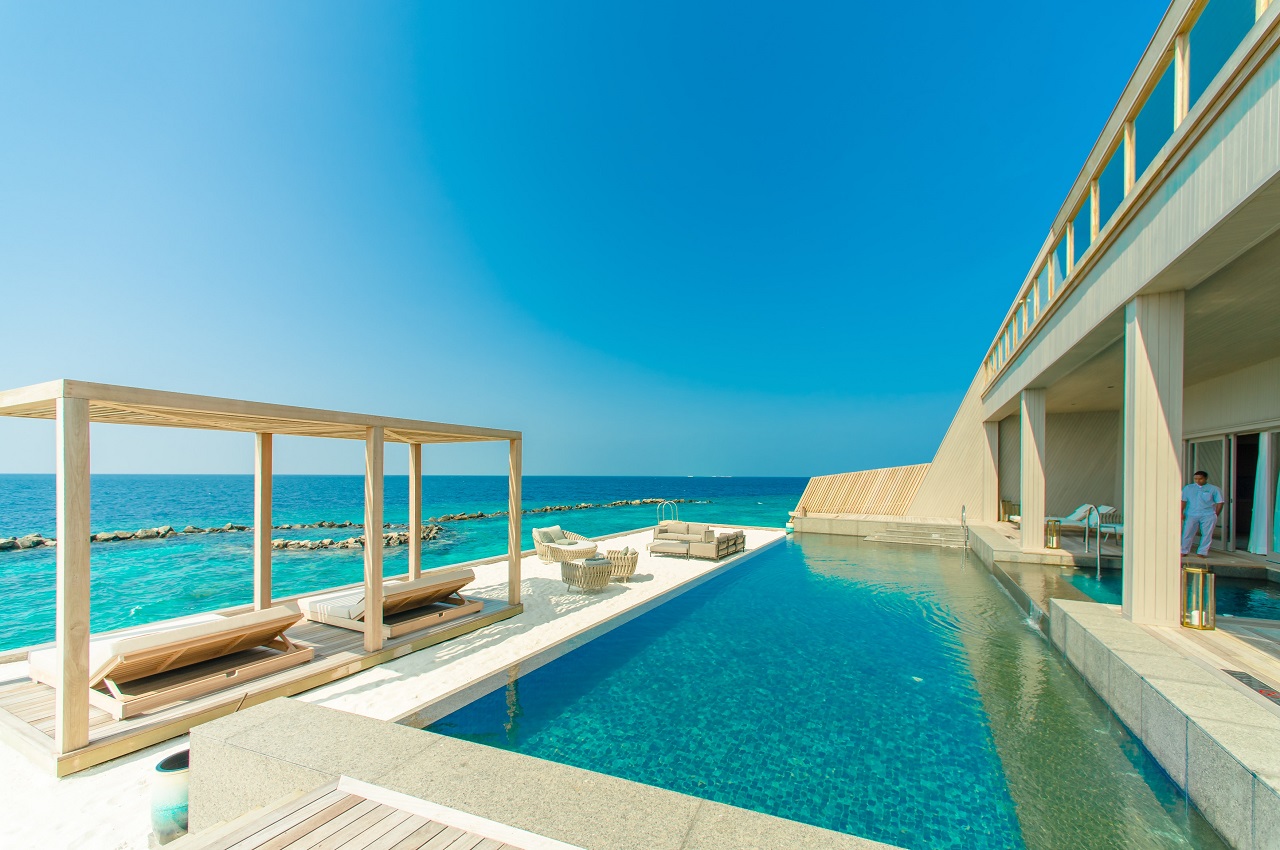
Saltwater pools (also known as ocean pools) were popular in Australia and New Zealand for many years before spreading to other continents. They are not a pool design or style but rather an alternate water filtration and purification technique.
A saltwater chlorine producer can also be used in an above-ground pool. These pools employ a saltwater chlorine generator to destroy germs and algae, which converts industrial salt into natural chlorine. A generator can be installed during or after pool construction; as such, a normal pool can be converted to a saltwater pool.
These pools require the same maintenance as standard chlorinated pools, including frequently washing pool bottoms and filtration equipment.
Advantages Of Saltwater Swimming Pool
- Monthly maintenance expenses are reduced
- Kinder to the skin
Disadvantages Of Saltwater Swimming Pool
- There are no structural or design advantages
11. Hot Tubs And Spas – Best For A Relaxing Dip

Hot tubs and spas are tiny heated pools used for leisure or hydrotherapy. A hot tub is a portable, above-ground pool type, but a home spa is an in-ground variant commonly installed with an in-ground pool. Hot tubs and spas are often less expensive to build and maintain than other kinds of pools due to their smaller size. However, their small size limits their use.
Advantages Of Hot Tubs And Spas
- Relax muscles and relieve aches and pains in muscles and joints
- Include recreational and social advantages
Disadvantages Of Hot Tubs And Spas
- Expensive to construct
- Difficult to maintain
12. Plunge Swimming Pool

Plunge pools are tiny, cold-water pools that have been utilized in Chinese medicine for hundreds of years and were also renowned by the ancient Romans. Many swimmers and athletes believe that jumping into a pool of cold water after a hot workout, sauna, or spa session offers therapeutic effects.
Plunge pools can be standalone or integrated into a bigger in-ground pool. Although they appear to be a regular spa, a careful toe-dip into the water reveals otherwise. You can also convert the cold plunge pool into a heated plunge pool if it suits your requirements.
Advantages Of Plunge Swimming Pools
- Perfect for an athletic training aid
Disadvantages Of Plunge Swimming Pools
- They are not intended for recreational swimming
7 Pool Styles To Consider
1. Cocktail Pool
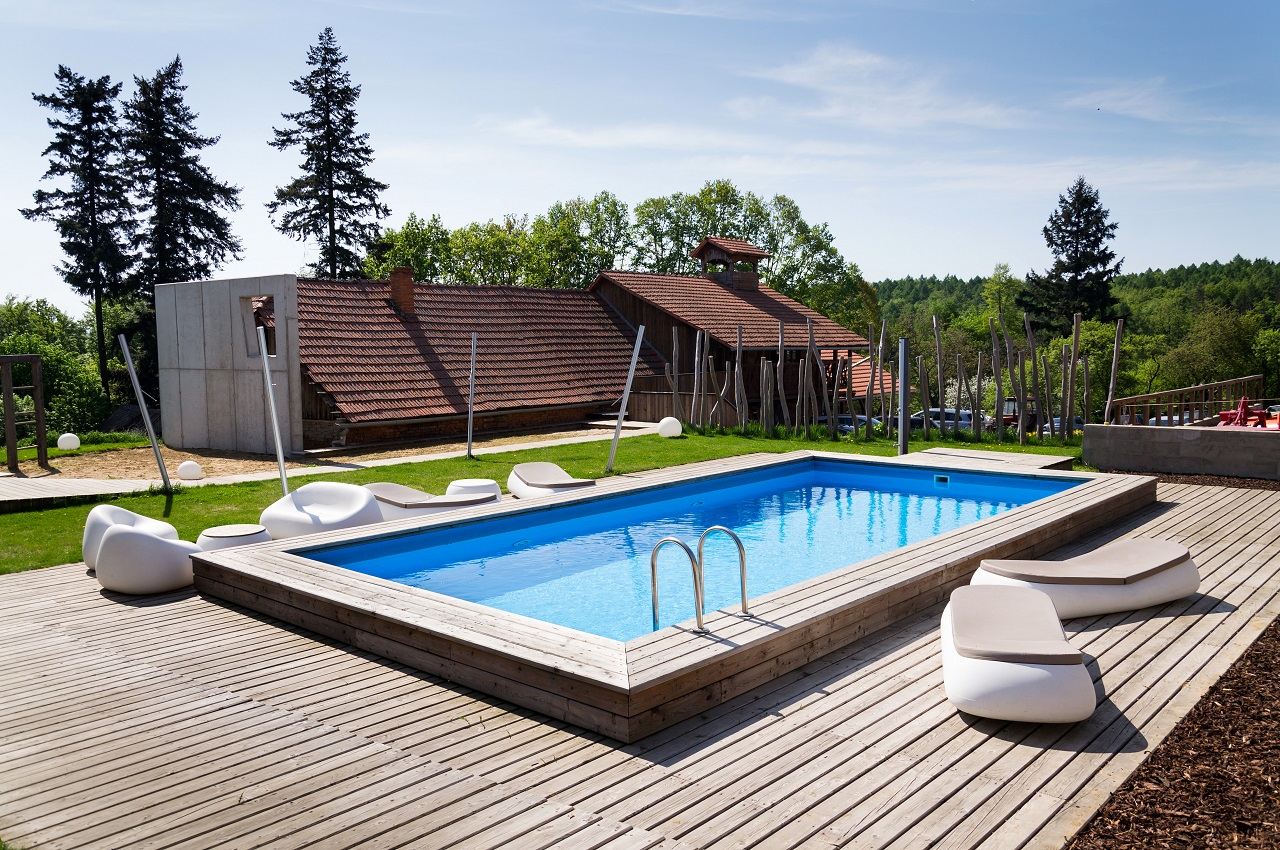
So what if you don’t have enough space in your backyard to create an Olympic-sized swimming pool? Installing a cocktail pool in your backyard gives you everything you need: a barbecue, a sitting space, and a pool.
Cocktail pools are typically shallow (about four feet deep) across. They’re ideal for unwinding, resting, and having fun with loved ones.
2. Solarium Swimming Pool
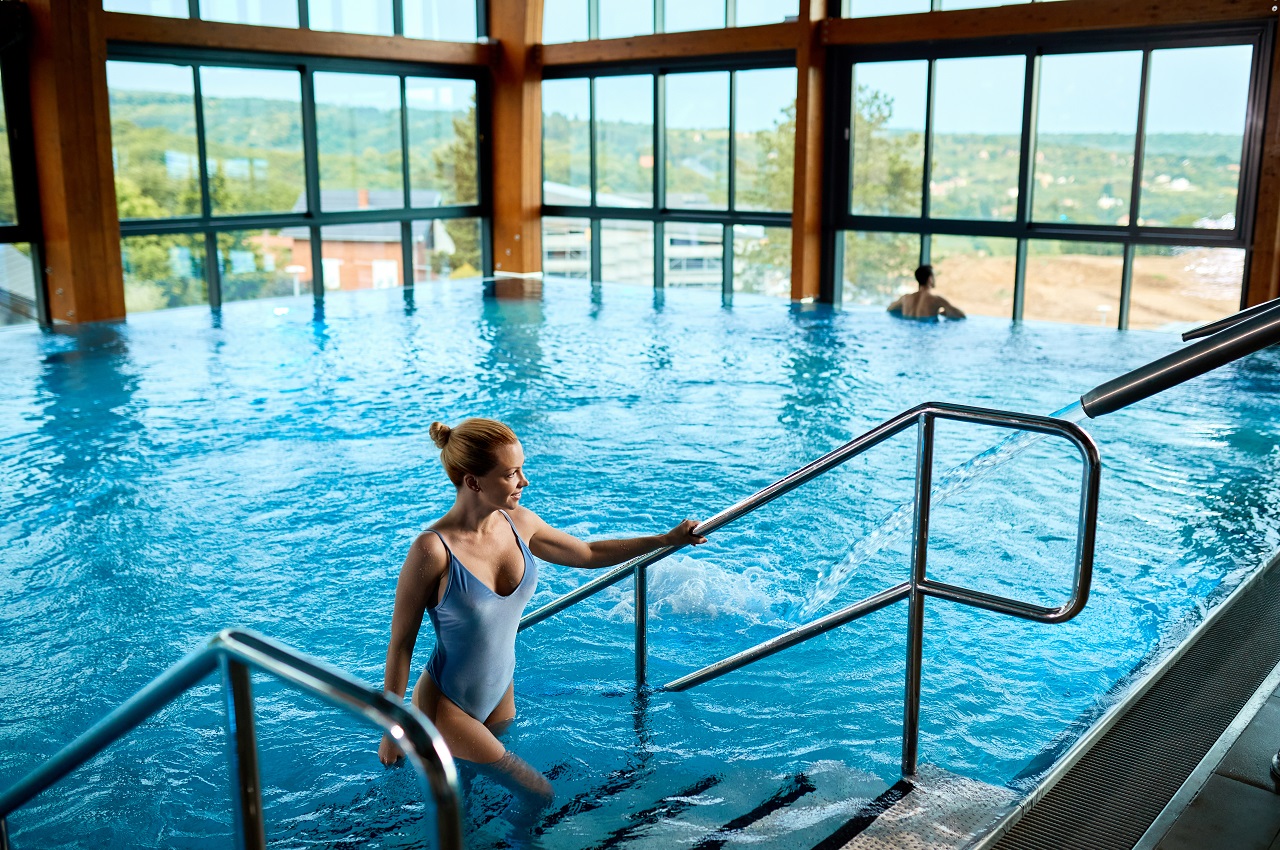
A solarium recalls the Art Deco style of the popular public swimming pools of the time. It covers the swimming pool and is located beyond the lovely crawling vine-covered gazebo. Light can pass through glass without letting in as many damaging rays or raindrops. This is the right compromise if you can’t decide between an indoor and an outdoor swimming pool.
3. Round-Shaped Swimming Pool

The soft edges of circular swimming pools complement classic architecture and design. You may also use natural materials like stones and pebbles to make it feel more tranquil and soothing. However, an in-ground rectangular swimming pool may be a better alternative if you want to swim laps.
4. Swimming Pool With Wooden Decking
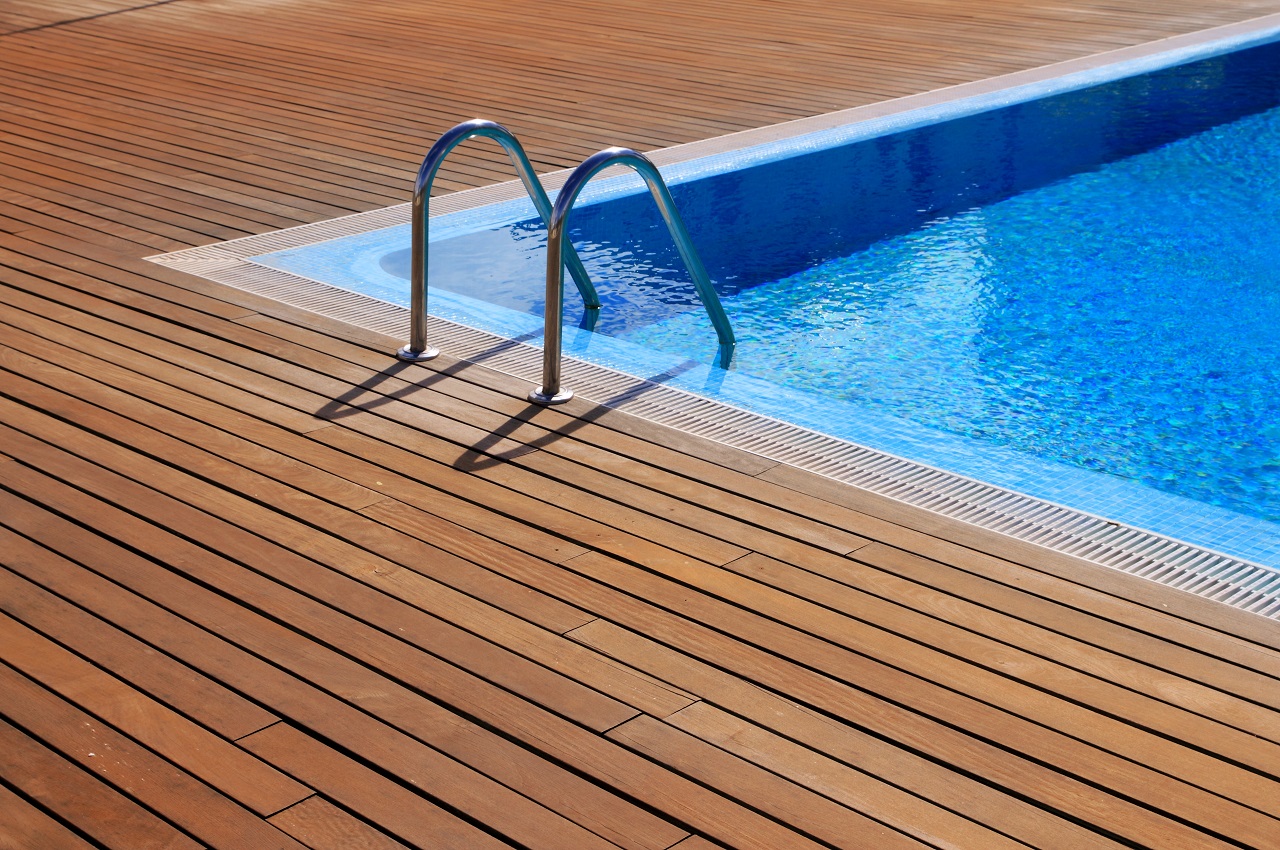
When building a pool, you must consider more than its shape, water, and material. You should also consider the neighboring deck.
There are several possibilities, including bluestone, concrete, grass, and wood decking. But wood decking is ideal for providing a colorful contrast to the water – though it does require care.
5. Irregularly-Shaped Swimming Pool

Instead of a standard rectangular pool, design yours around the landscaping. Consider this if you desire space for palm trees, other luxuriant flora, or a neighboring fire pit. The uneven ground of the pool will also help indicate where the water is becoming deeper, which is ideal if children are around.
6. Swimming Pool With A Spa
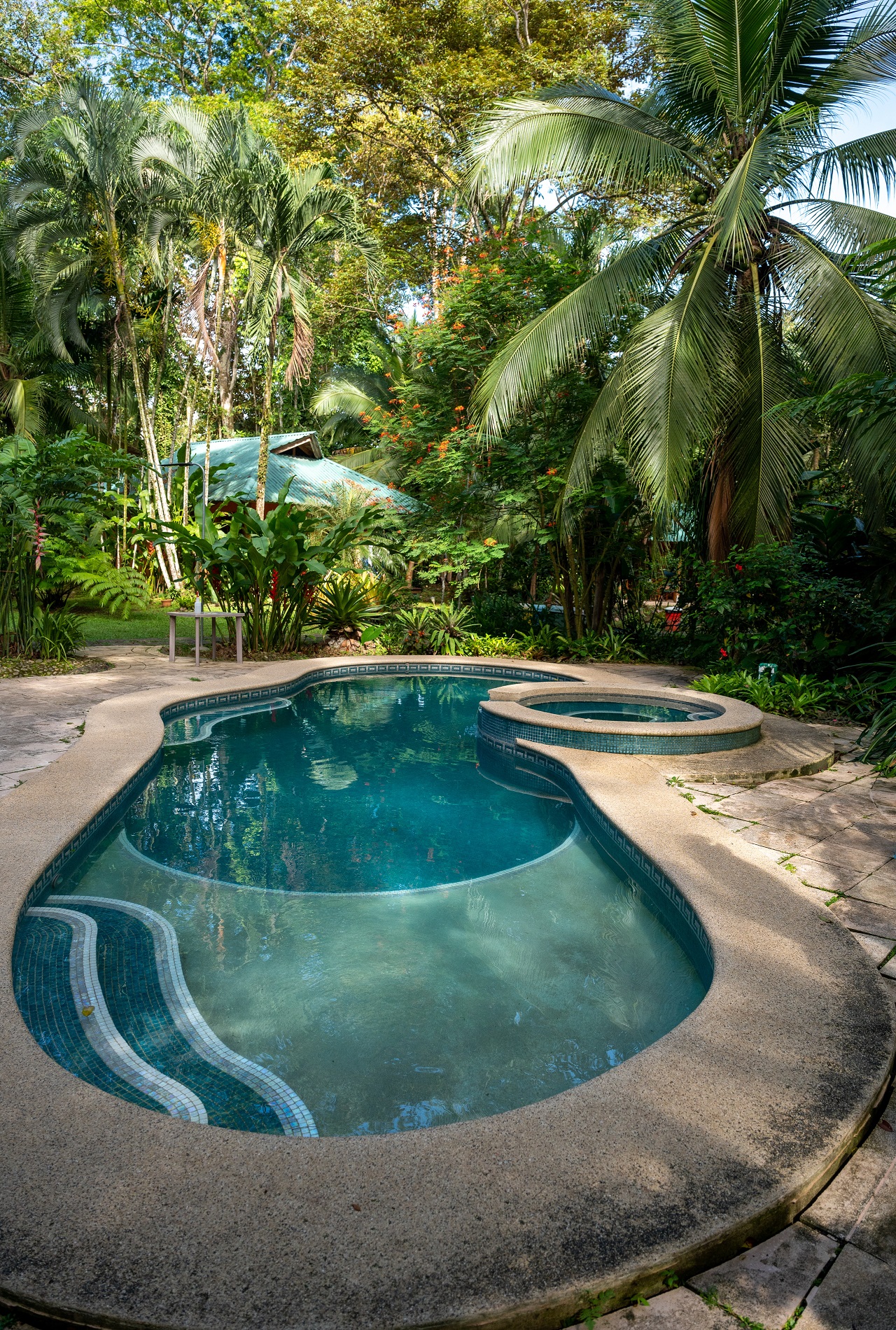
For the best experience, include a personalized spa in your pool. Consider incorporating it within the pool, or consider a raised nearby spa to counteract the formation of the conventional swimming pool. In either case, it’s a more useful and visually appealing transition than a standalone tub.
7. Swimming Pool With An Attached Slide
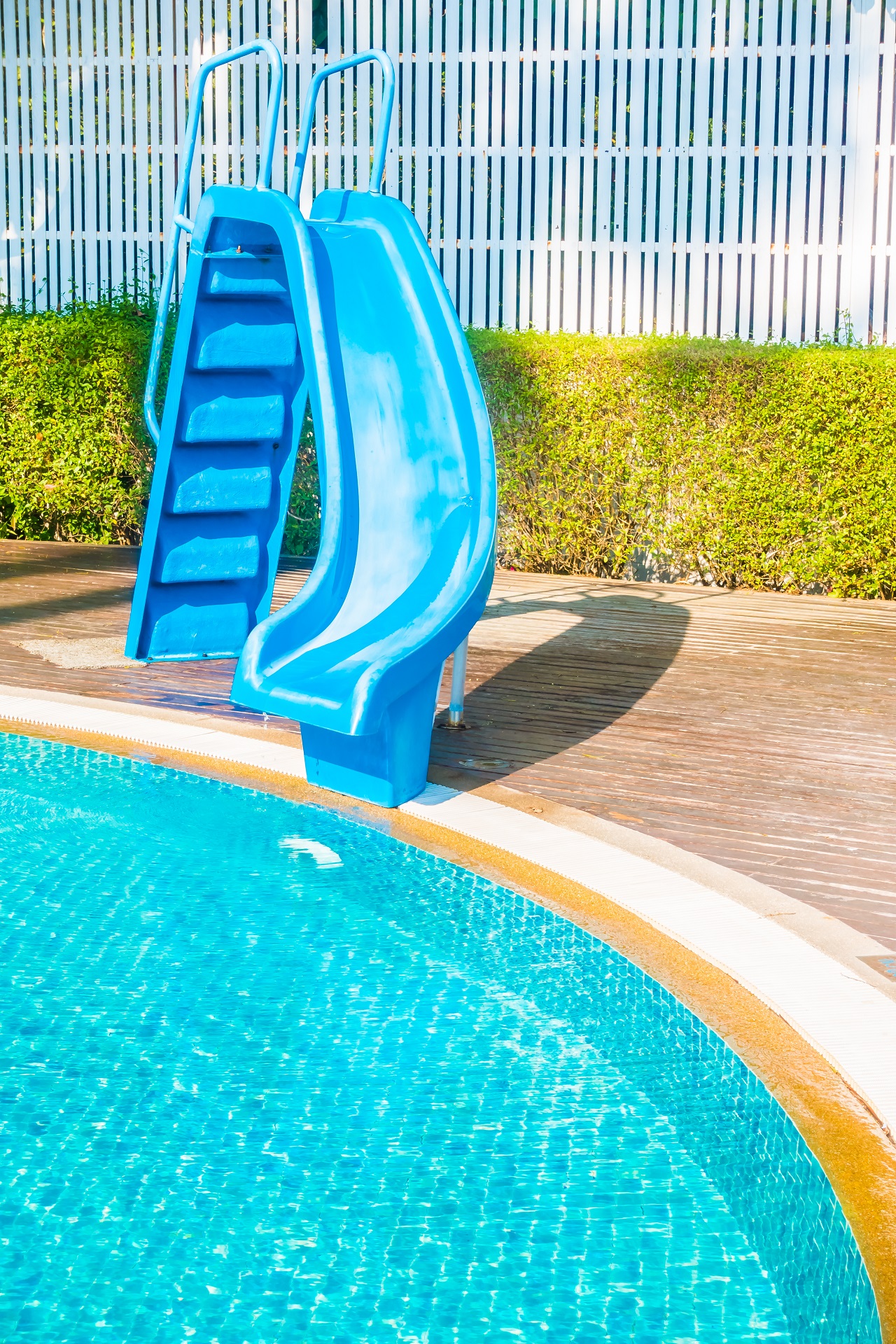
As your children grow older, you can switch to a streamlined, contemporary swimming pool. However, while they are still little, construct a water slide and a playhouse structure. It’s the ideal setting for crafting summer memories. Who needs a surfboard when a twisty slide would suffice?
How To Choose A Swimming Pool For Your Home Improvement?
The cost of installing a swimming pool might vary greatly based on your requirements. On the cheaper side, you may purchase a lap pool. After all, pools that act as architectural highlights or specialized training features can cost thousands of dollars.
Sp, when choosing between the above-mentioned pool types, keep your requirements and budget in mind. Consider the following points:
1. Your Budget
For those on a tight budget, even a basic above-ground pool may provide hours of entertainment for your family. However, if your budget permits, a large in-ground swimming pool could be an eye-catching addition to the value of your house.
2. Your Requirements
A pool used mainly for physical fitness may differ from one used mostly for children’s play, which again is very different from the one used primarily for adult socialization. Make certain that the pool you select satisfies your real requirements.
3. Space Available
A huge in-ground swimming pool may take up most of your backyard space. So, consider if you want to utilize your backyard for a swimming pool at the expense of other hobbies, such as planting trees or family sports. If the response is yes, then go ahead and do it.
4. Care Requirements
Most swimming pools involve substantial maintenance, but some demand far more than others. To avoid dealing with weekly washing, regular water testing, and the other responsibilities associated with pool maintenance, make sure your budget provides for the expense of a weekly and seasonal pool care service.
5. DIY Aspirations
Although a few do-it-yourselfers build in-ground swimming pools, they are the exception rather than the rule – every homeowner is truly prepared to construct an in-ground swimming pool. On the other hand, above-ground swimming pools may be installed and maintained by many talented and ambitious DIYers.
Even if you can pay for the professional in-ground alternative, if you are an active DIYer, you may like the challenge of making such a water feature. DIYers frequently utilize soft-sided pools that can be installed and removed as the season changes. In locations where above-ground pools may be used all year, DIYers can even build big wooden decks around them to simulate an in-ground pool.
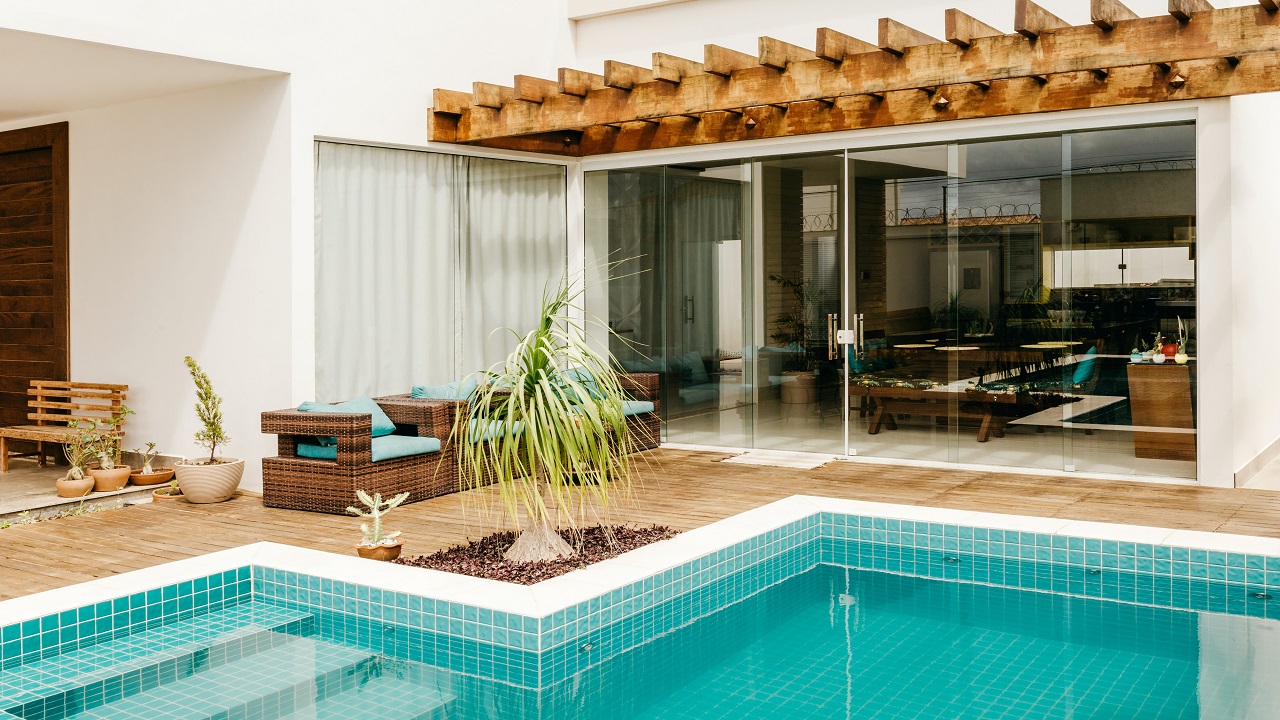
Types Of Pools For Your Future Home Final Words
Swimming is a great leisure activity for people of all ages. It is a low-impact and terrific way to unwind and feel good. As such, there are several advantages to owning a pool or a spa.
After a long day at work, nothing beats taking a relaxing plunge in your crystal-clear pool and enjoying a paradise retreat in your backyard.
A yard with a swimming pool might be ideal for social events, celebrations, family parties, or simply working from home. In fact, swimming pools in residential buildings unite numerous communities by establishing a communal place that promotes enjoyment and relaxation.
That said, swimming pool designs range from modest lap pools and peaceful spools to attractively designed architectural pools and opulent infinity edge pools. You can also opt for plain rectangular pools and those with adjacent spas.
To find out which is best for your home, you must assess your needs, determine a budget, and examine the available space. Make sure you choose a design that is simple to clean and maintain.

